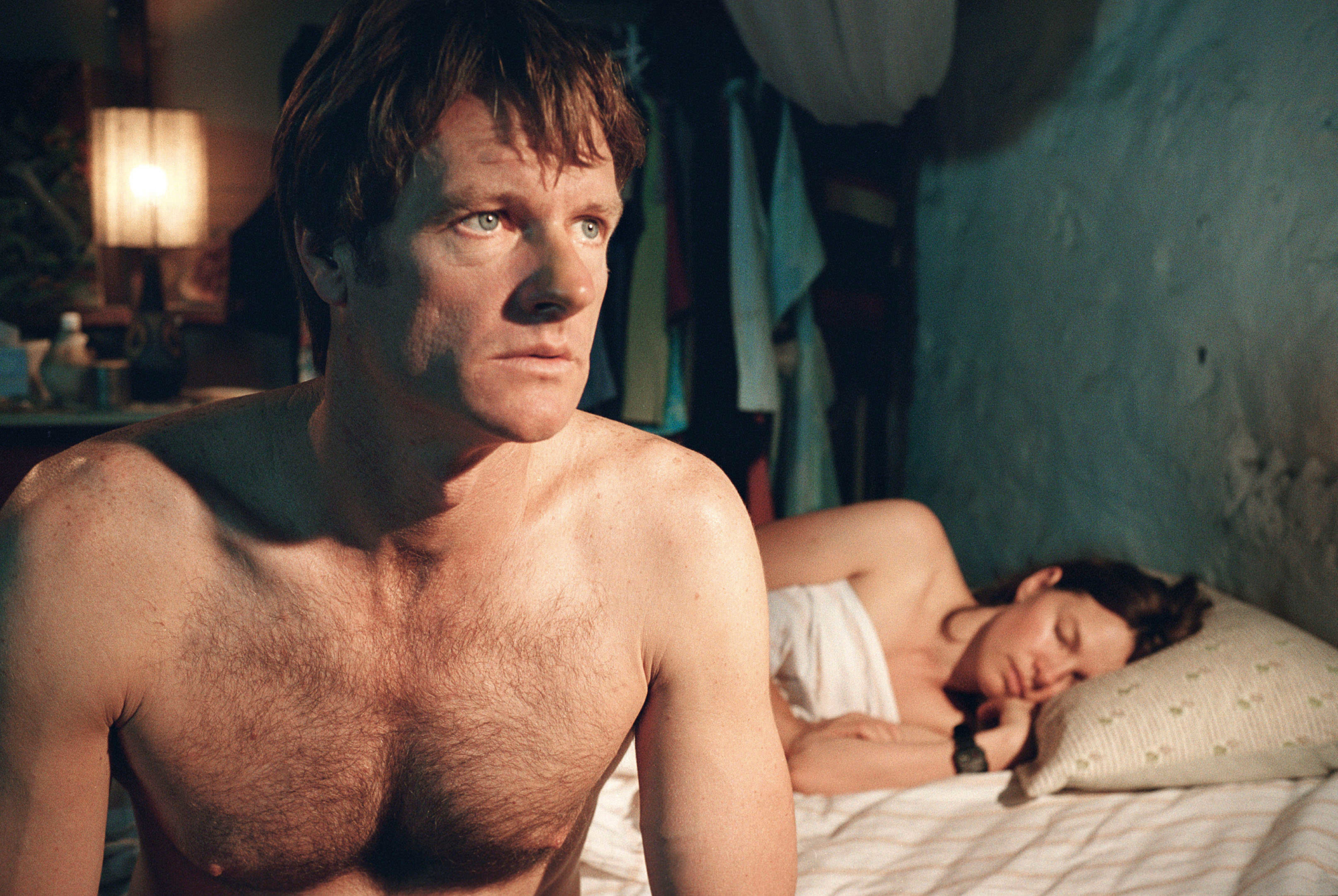Over the past four years I have judged the Cancer Council’s annual Film Awards. This has been an experience both harrowing and uplifting in equal measure. Self-contained tributes and devastatingly reflective essays (often following a family member with cancer as they face their final days) vie with slick Tropfest-styled gag films.
My preference has always been given to films which articulate something about the experience of cancer (personal, collective; philosophical and emotional) but which also make some contribution to the depiction of cancer in films, that break from or somehow exceed the cancer conventions of cinema.
Cinema Cancer
In the movies, fictional people’s cancers seem to have their own histology and prognoses that distinguish them from more run-of-the-mill cancers. ‘Cinema Cancer’ is unlike conventional cancers (the ones real people get) and can be characterized by the following features:
1. In the movies the only cancers are the ‘nice-looking’ ones – leukaemia and brain tumours are the most popular options for Cinema Cancer in large part because these cancers do not involve unspeakable sexual organs; messy anatomical systems; or disfigurement by disease, surgery or radiation.
2. In particular, in the movies, lung cancer is almost unheard of – after all there are the tobacco companies (and their advertising dollars) to consider.
3. Cinema Cancer afflicts mostly the young, with a disproportionate number of cancer patients under the age of 40 (and good looks appear to be a significant determining factor).
4. Cinema cancer doesn’t cause too much pain and those that experience it should not expect to be too debilitated by its progress – for instance, those with brain tumours need only grimace and grab their head occasionally. A great example of scalp clutching significance occurs when (the otherwise headstrong) Bette Davis discovers something is wrong in Dark Victory (Edmund Goulding, 1939). Her interpretation of the suffering of those with lethal glioma brain tumour must have struck a chord – she earned her third Academy Award nomination for acting for this, her favourite role.
5. Cinema Cancer’s more evident symptoms include loud or dramatic accompanying music, and an over-reliance on metaphor.
6. Cinema Cancer is a relatively recent phenomenon. In part this is a result of the Hays Code,[1]The Production Code (also known as the Hays Code) was a set of guidelines governing the production of motion pictures. The Motion Pictures Producers and Distributors Association (MPPDA, later to become the Motion Picture Association of America or MPAA) adopted the code in 1930, began effectively enforcing it in 1934, and abandoned it in 1967. The Production Code spelled out what was and was not considered morally acceptable in the production of United States motion pictures. (From Wikipedia, see http://en.wikipedia.org/wiki/Hays_Code) which identified surgical operations as a ‘repellant subject’ and a ‘be careful’ area. The Code also limited the graphic representation of medical themes as well as discussion of particular areas of the anatomy, making cancer almost impossible to depict (almost, but not entirely). The rare instance of Cinema Cancer before 1970 may also have something to do with early Hollywood’s insistence on a happy ending.
7. Cinema Cancer always has a point – a Very Important Lesson (VIL) for both the character and the unsuspecting viewer. A Very Important Lesson can substitute for a happy ending on occasion (see the accompanying section on VILs for more detail on this point).
But be warned. Should you think, even for a moment, that Cinema Cancer is somehow preferable to other cancer alternatives, then think again. Cinema cancer is the most pernicious of diseases, killing almost everyone who is afflicted with it.
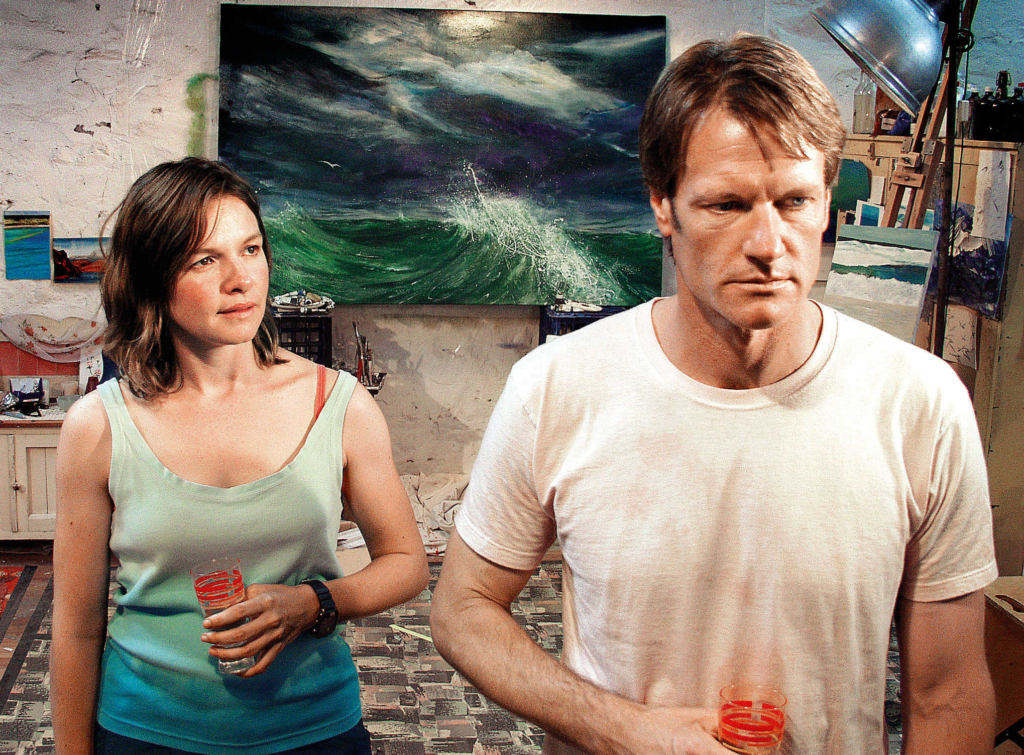
Ordinary Disasters
Few movies appear to be interested in what it might be like to live with cancer. For instance, to have a character who is (incidentally) in remission or just happens to be living with disease. There are very few films that are simply about cancer. Cancer as cancer. One of the best examples of a feature film that does this is Paul Cox’s remarkable A Woman’s Tale (1991). Sheila Florance (who had cancer during the shoot and died only a couple of days after receiving the AFI Award for Best Actress) plays the role of an elderly woman with cancer who busies herself with a variety of small neighbourhood and family dramas. The film draws a subtle connection between Florance’s unsteady ‘occupancy’ of her own failing body and her tenancy in a decaying apartment block, but the metaphor never really surfaces. In fact, the film plays ironically on the stigma associated with the disease with the fabulous line: ‘Some of my best friends have cancer.’
The films that I get to watch as part of the Daffodil Day Awards are also notable because they are so very personal and are most often made without regard to audience appeal. By which I don’t mean to suggest there is no audience for them. Simply that they are intimate and engaging and immediate in a way you don’t often experience when you go to the cinema. It was to my surprise, then, that I found these qualities in Sarah Watt’s commercial release, Look Both Ways.
Look Both Ways is Watt’s first feature film and, unlike her animated short films, it introduces live-action to her repertoire. There is a persistent and unfounded popular belief that animation is somehow a children’s media. Watt is very effective in using our complacency about animation to produce some real shocks in this film. There’s something very unsettling about seeing an animated killer whale devour a baby, for instance.

The story follows several characters over an unbearingly hot weekend as they figure out how to deal with the unexpected. One of these characters is Nick, a newspaper photographer played by William McInnes (who is also Watt’s husband). Nick is told in the course of a routine medical, way too late on a Friday afternoon, that he has cancer and that he’ll have to wait until Monday for a consultation with a specialist. In the course of the following uncomfortable days, Nick repeatedly encounters Meryl (Justine Clarke), an illustrator with an overdue deadline who imagines disasters in the most everyday occurrences. But not all disasters in the film are restricted to Meryl’s imagination. In fact, Meryl and Nick first meet at one such ‘ordinary disaster’ – a suburban train accident in which a pedestrian is killed. ‘Ordinary’ in that the repercussions of this accident are most keenly felt in terms of detailed things, everyday routines that will be forever changed for those involved. This event neatly draws together various characters and plot lines in the film, and provides a credible setting for the film’s underlying interest in the unassailable power of the unplanned. In Look Both Ways, events inevitably outweigh ideas and anticipations; intentions, no matter how mundane, are invariably undermined by the unexpected. A routine medical becomes something else. A dog walk, something else. A visit to mum’s, something else. And so on.
The film’s deliberations on this theme are underlined by Meryl’s tendency to imagine spectacular and unfounded disasters around every corner. These fantastic calamities don’t appear to faze Meryl in any way – they are simply part of her ‘reading’ of her environment. A train might glide along its tracks without incident, or it might come crashing down. No matter how unlikely the latter, there is some comfort to be held in the knowledge that disaster didn’t come to pass. There is a small victory every time routine perseveres. This solace requires disaster to be possible, if only imagined.
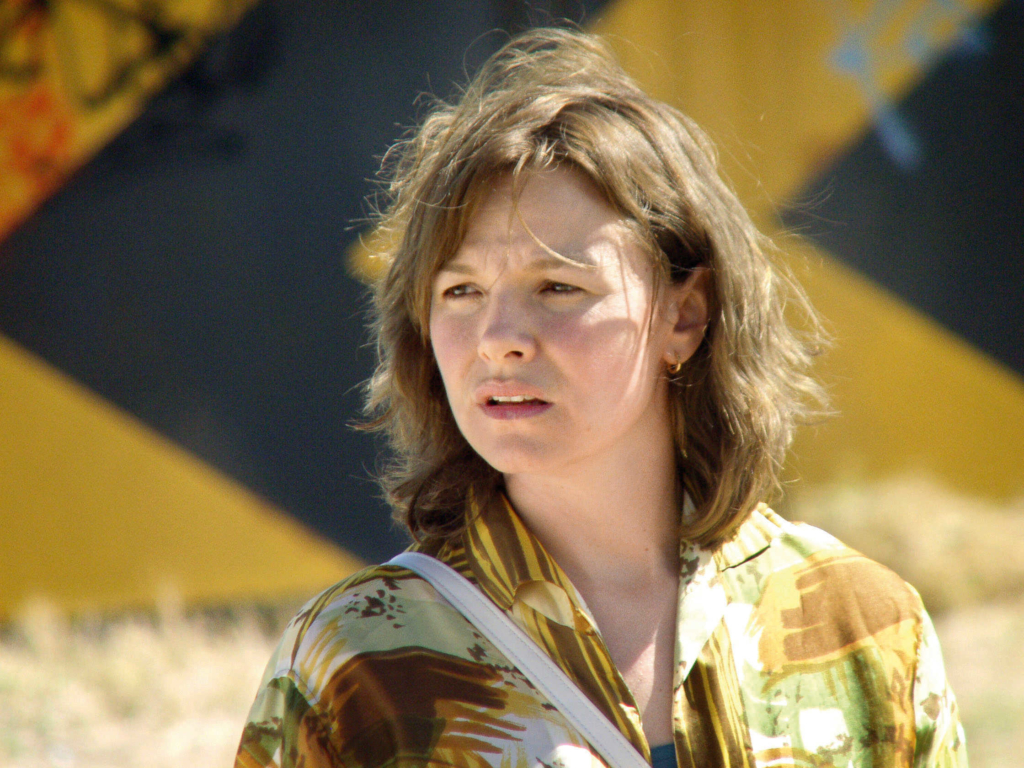
The program note for the Melbourne International Film Festival screening of Look Both Ways presents the film’s preoccupation with the anticipation of disaster as a warning: ‘We all could be but a heartbeat from calamity.’ I’m not sure this is the only way to think about the film’s presentation of these ideas. My sense is that Look Both Ways is also showing us how calamities (real and imagined) exist in the fabric of people’s lives – a strategy which ultimately defuses the idea of calamity itself. We can never fully protect ourselves from disaster, but we can begin to approach it in such a way that preserves a space for personal happiness as well. In other words, we need to learn to live with disaster.
Watt depicts Meryl’s apprehensions in graphic animated sequences that are interspersed throughout the film. By using bursts of animation to give vision to her character’s inner thoughts, Watt invites us to read, like Meryl, on several levels – to ‘look both ways’ as it were. And I suspect she’s also toying with something very important at a broader level that she doesn’t specify, but which nags at the edges of what might otherwise be a pretty straightforward romantic comedy.
As children, we were painstakingly taught to look both ways before crossing the road. In my memory there was even a government-funded campaign involving an oversized actor in a ginger cat suit that came accompanied by one of those irritating and unforgettable kid’s songs. The lyrics urged us to ‘look to the left, look to the right and look to the left again (then if the road is clear of traffic, walk straight across the road, don’t run …).
As adults, government campaigns urge us to be alert (but not alarmed). It’s the grown-up variation of the idea that unspeakable dangers lurk like a hazardous driver around every corner – and that our safety supposedly lies in our ability to scrutinize our surroundings with care – to look not once, but twice. Is that an overcoat – or an explosive device? Is that tomorrow night’s dinner or a ‘trojan’ chicken harbouring an incurable disease? These are very powerful cautions, told to us in one way or another since we were trusting toddlers perched at the edge of the road, happily unaware of the oncoming traffic.
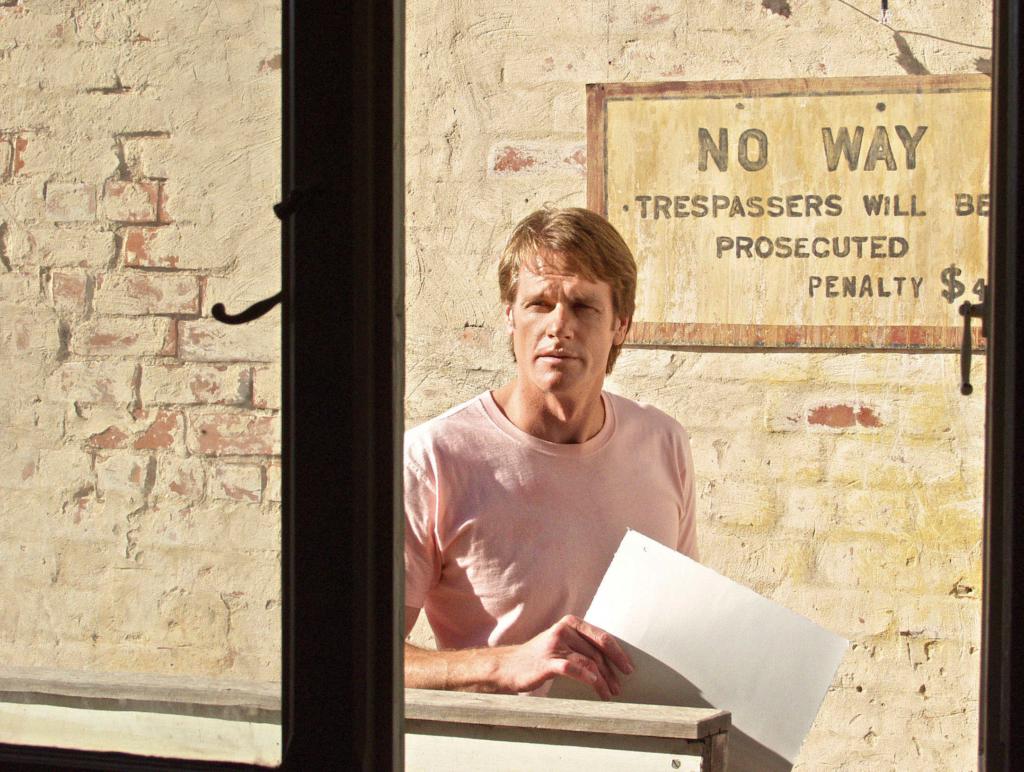
It also suggests that the now very public experience of imminent disaster and the way we collectively deal with it has a lot to do with how we look to the future, but also with how we view the past (a kind of looking both ways in itself). The past is apparently a formative state of trustworthiness and singular vision – like that of the unsuspecting toddler. The present necessitates a capacity for vigilant scrutiny.
In this context comes Sarah Watt’s extraordinary, head-turning film (though I’m not suggesting for a moment that Watt is attempting to directly address any of these points – simply that they can’t be avoided for this viewer at this time). For me, what lifts Look Both Ways out of the ordinary is the way it defuses disaster and at the same time acknowledges in that containment a place for personal anxieties, which, no matter how fanciful, are an ever-present (if unexpected) accompaniment to our day-to-day experiences.
If Look Both Ways can be considered a cautionary tale at all, it is that it cautions us against complacency of a different kind. Rather than exhorting us to be constantly on the watch for potential calamity, or the perils of oncoming traffic, I think the film suggests instead that we need to look both ways at the types of events we describe as disasters. In Look Both Ways, life and death are everyday events. They don’t always need to be capitalized. An unexpected cancer diagnosis, for instance, might be experienced as both more and less than we imagine. When characters in Look Both Ways ask if Nick has, ‘Cancer cancer’ they imply this dual understanding. And sometimes an overcoat is simply an overcoat. And Cancer is simply cancer. With a small c.
Cinema Cancer’s Very Important Lessons (VILs)
1 Cancer is a reminder that fate is fickle: Agnes Varda’s 1961 classic Cleo de 5 a 7 shares with Look Both Ways the plot point of a suspended cancer diagnosis. In less than two hours Cleo veritably bolts down the road of self-discovery to the realization that fate reserves flightiness to itself.
2 Cancer is a way for a character to redeem him or herself: Just about any cancer film includes some variation on the New Testament idea that suffering leads to personal deliverance.
3 Cancer is an opportunity for existential reflection: There’s the unfortunately comedic My Life (Bruce Joel Rubin, 1993), in which Michael Keaton makes a video for his unborn child, Kurosawa’s masterpiece Ikiru (1952), and Denys Arcand’s Les Invasions Barbares (2003), which is unusual simply for showing a cancer patient who has friends! But the frozen chook goes to Robert Bresson’s sombre Diary of a Country Priest (1951) in which stomach cancer is treated with a diet of bread and wine and large doses of introspection.

4 Cancer is a catalyst: There are a multitude of films in which a cancer diagnosis inspires a character to complete a project, start or end a relationship, give up (or take up) a drug addiction and so on. Stepmom (Chris Columbus, 1998) is a much-loved example. It is important to bear in mind that in this and the previous point, the cancer diagnosis more often than not turns out to be incorrect, leading to an additional lesson:
5 Cancer is a cause for celebrating the status quo: These are films in which a character realizes that his or her life isn’t so bad after all, or that it is important to ‘live for the moment’. Think Love Story (Arthur Hiller, 1970) in which cancer means never having to say you’re sorry (unless you are the doctor).
6 Cancer is a cause for big-heartedness: Very Annie Mary (Sara Sugarman, 2001) is a Rachel Griffiths vehicle that milks maximum pathos from not just one, but two diseases.
7 Cancer is a sign of bad karma: In which a character who deserves to be punished develops cancer in the course of a movie.
8 Cancer is an opportunity to examine social mores and personal ethics: In particular, this comprises films in which an assisted death is portrayed. In An Act of Murder (Michael Gordon, 1948), a judge considers killing his wife to ease her suffering (all of which is off-screen of course). This lesson is related to:
9 Cancer is a symptom of environmental illness: Which features in whistle-blower movies like Silkwood (Mike Nichols, 1983), A Civil Action (Steven Zaillian, 1998) or Erin Brockovich (Steven Soderbergh, 2000), in which corporate malpractices are shown to lead to cancer clusters. Medicine Man (John McTiernan, 1992) is a riff on this theme: Sean Connery is a medical researcher who discovers a miracle cancer cure in the Brazilian rainforest. Alas, he is thwarted by companies profiting from forest clearing and in his attempts to stop them he accidentally destroys the forest, his lab and his research notes. This lesson also relates to:
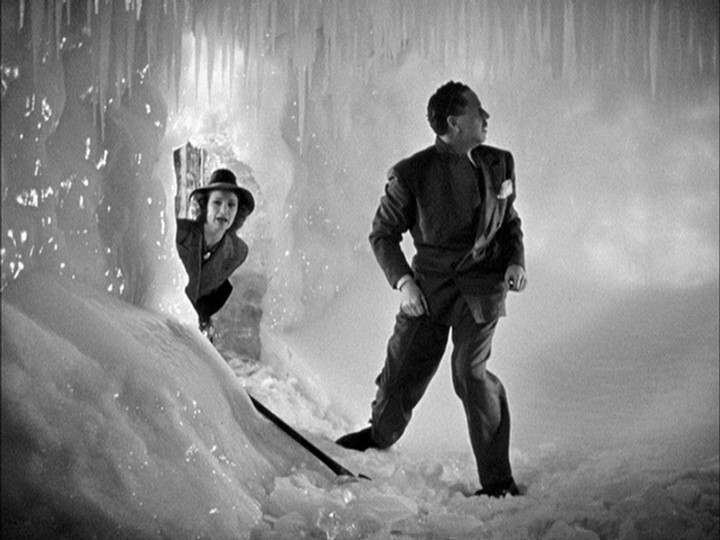
10 Cancer is a symptom of social illness: The plot line of Man with Nine Lives (Nick Grinde, 1940) barely needs unpacking for its evident social commentary: Dr. Leon Kravaal (played by Boris Karloff) develops a potential cure for cancer which involves freezing patients in a vast underground cavern. But local officials believe Kravaal is a murderer, and in their attempts to reign him in they cause a lab accident, which does kill a patient, and has the added inadvertent effect of freezing everyone in the room. Years later, the bodies are rediscovered and revived in vindication of Kravaal’s theories. His attempts to replicate the laboratory accident become increasingly desperate and eventually he resorts to murder to keep his research going.
11 Cancer is a way of finishing off a character who has overstayed their welcome (or got a better deal): Surely the ultimate depiction of this lesson (and shot in personal POV no less) is Molly Jones’ slow wipe to black in A Country Practice (1985).
Endnotes
| 1 | The Production Code (also known as the Hays Code) was a set of guidelines governing the production of motion pictures. The Motion Pictures Producers and Distributors Association (MPPDA, later to become the Motion Picture Association of America or MPAA) adopted the code in 1930, began effectively enforcing it in 1934, and abandoned it in 1967. The Production Code spelled out what was and was not considered morally acceptable in the production of United States motion pictures. (From Wikipedia, see http://en.wikipedia.org/wiki/Hays_Code) |
|---|
